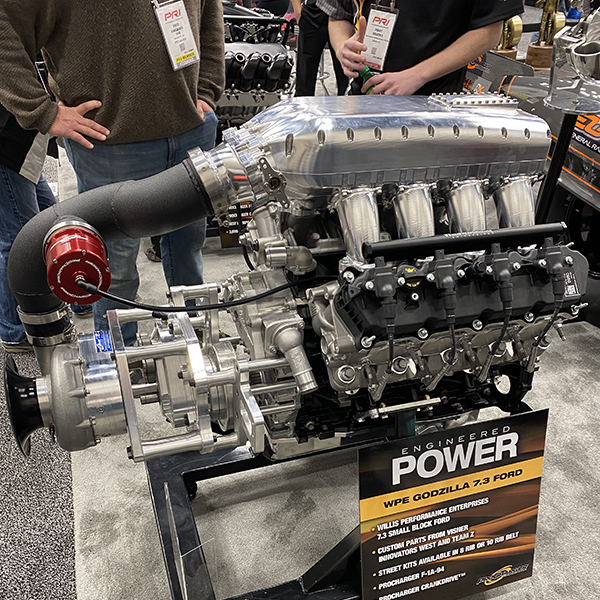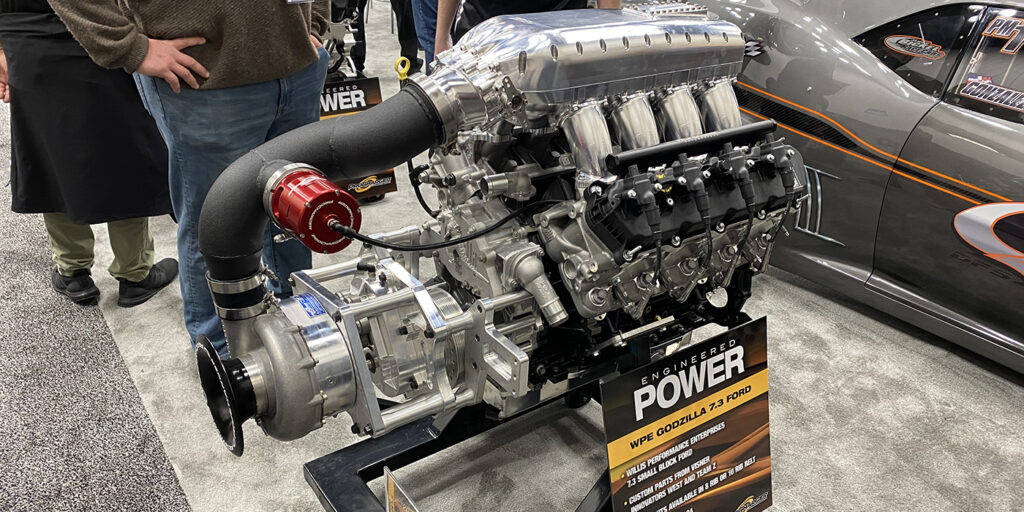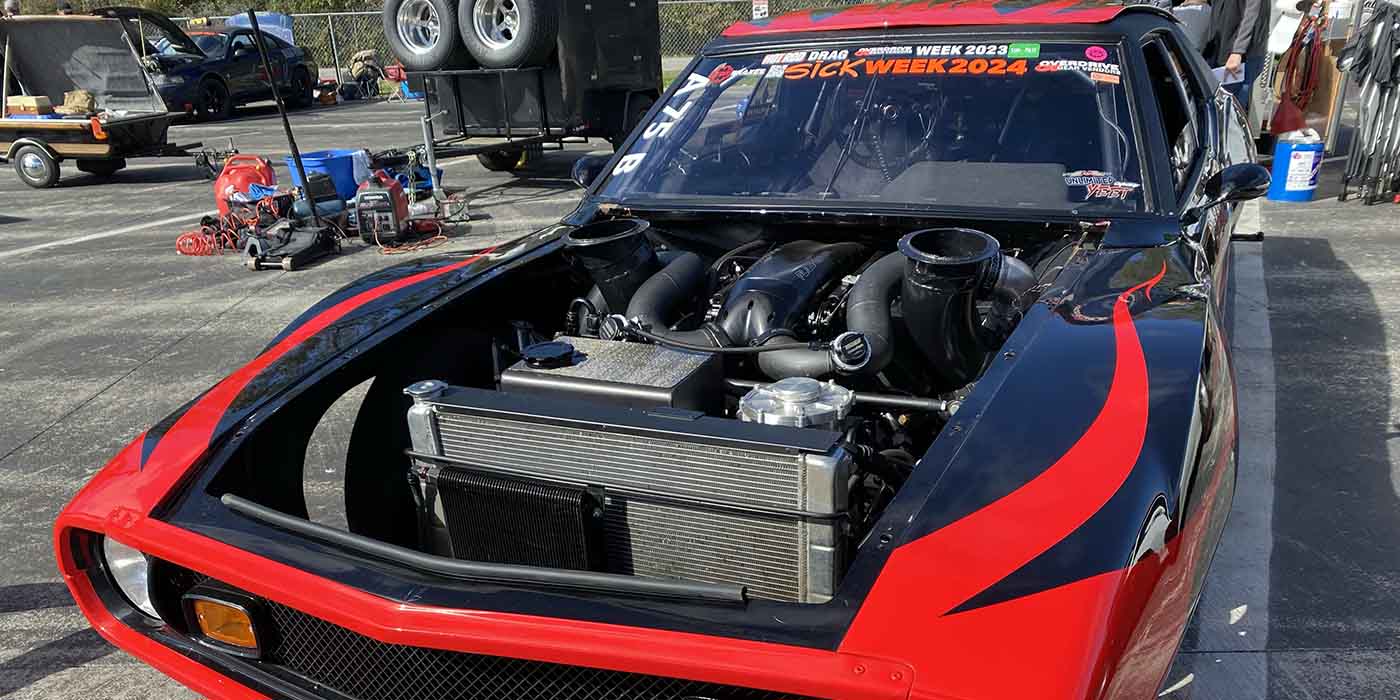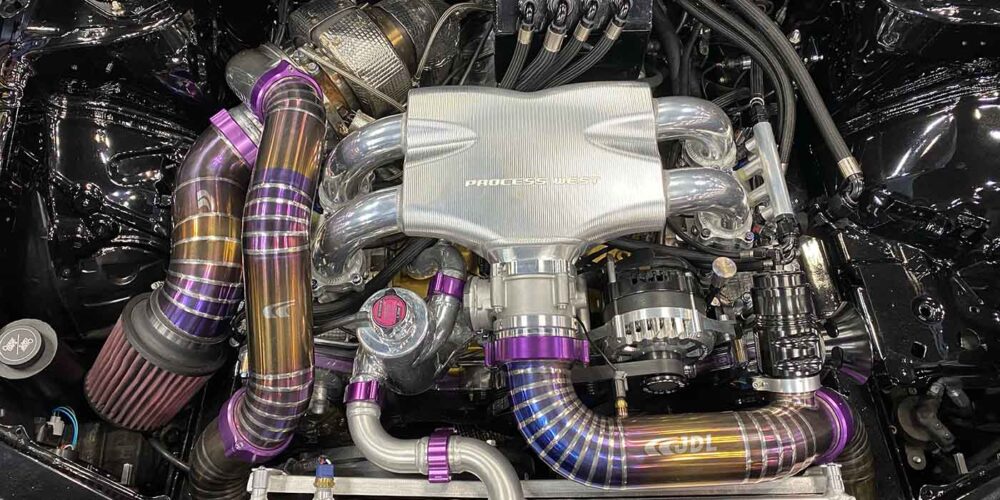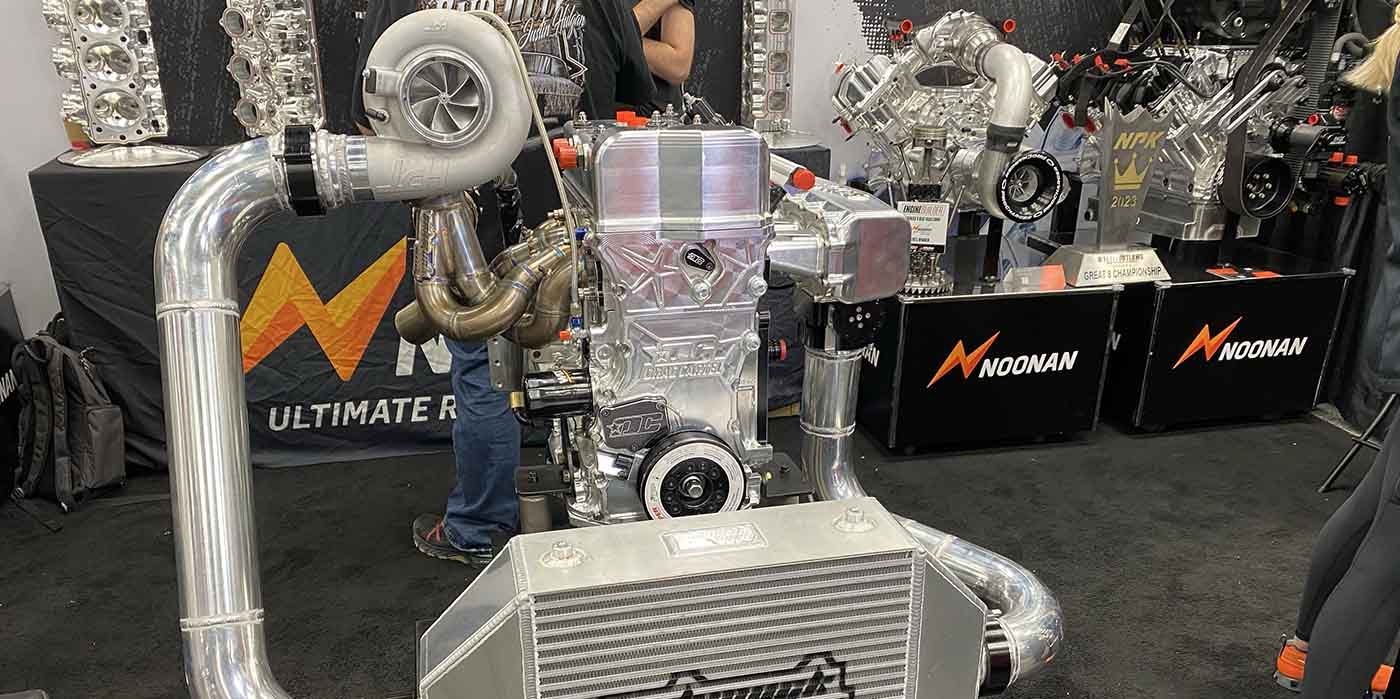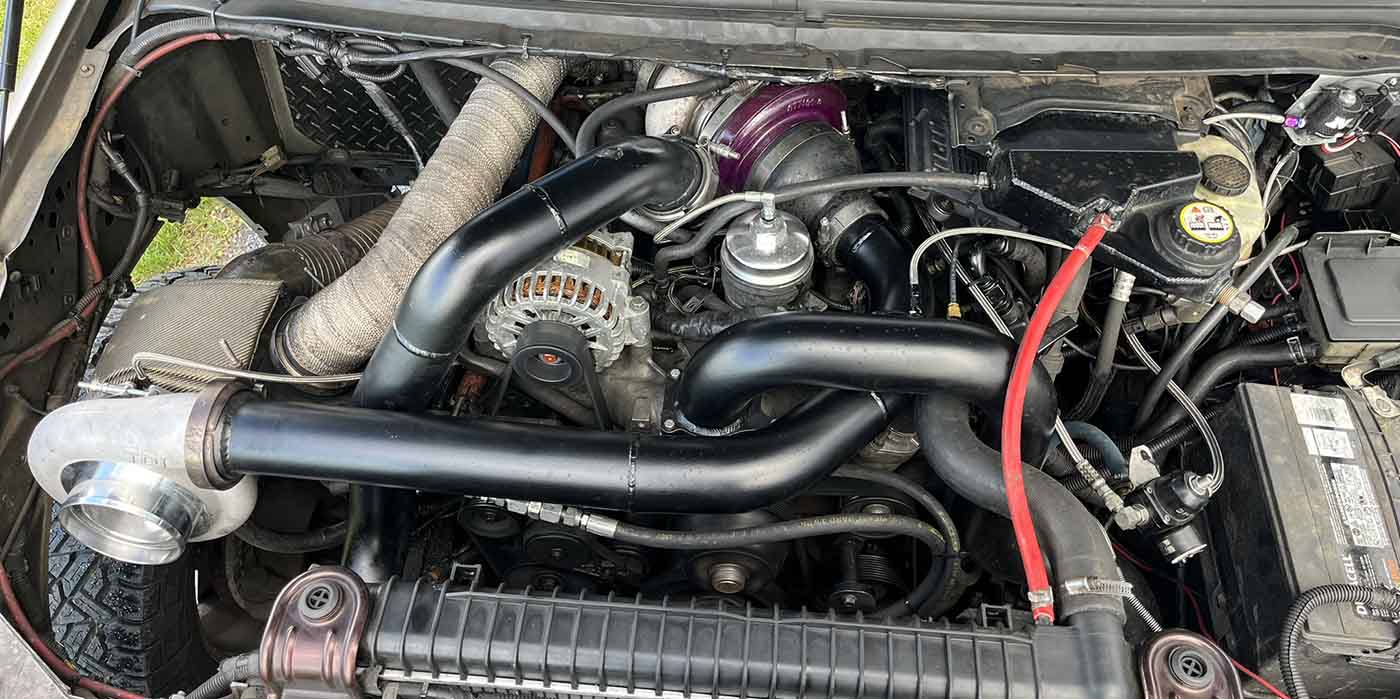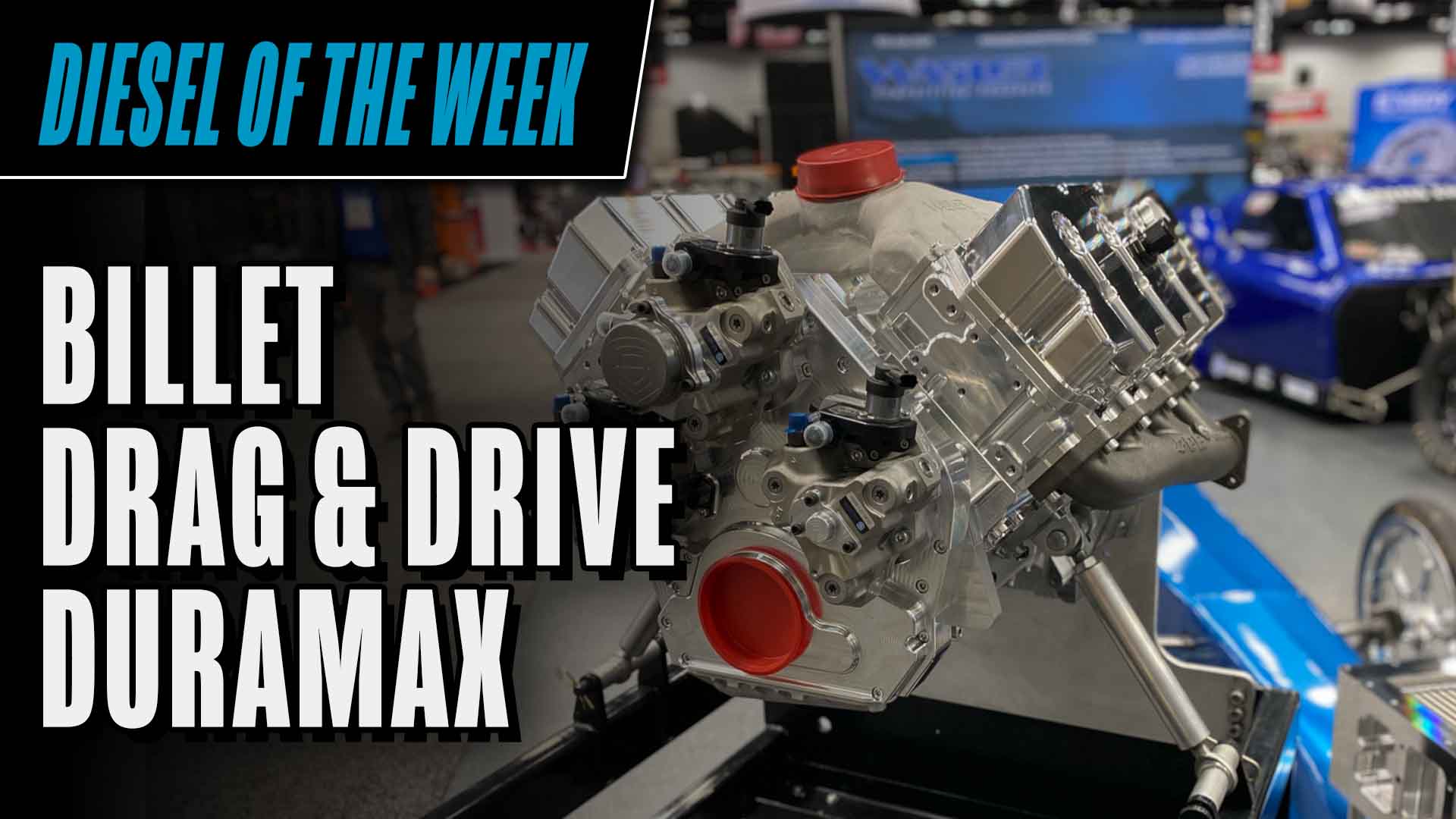Engine of the Week is presented by



Ever since Ford announced its 7.3L “Godzilla” engine, the automotive aftermarket has been figuring out new ways to utilize the platform and improve upon its performance characteristics. Few engine shops have been more successful at that than Willis Performance Enterprises in Willis, MI, which specializes in small block Ford drag racing engines, and more recently, performance parts for the 7.3L Ford Godzilla engine.
That success is in huge part thanks to Brian Wolfe, who operates Willis Performance Enterprises (WPE), and is the former director of global engine engineering at Ford Motor Company. Brian’s background has allowed him to experiment with a variety of 7.3L Godzilla combinations from mildly modified to fully built and boosted.
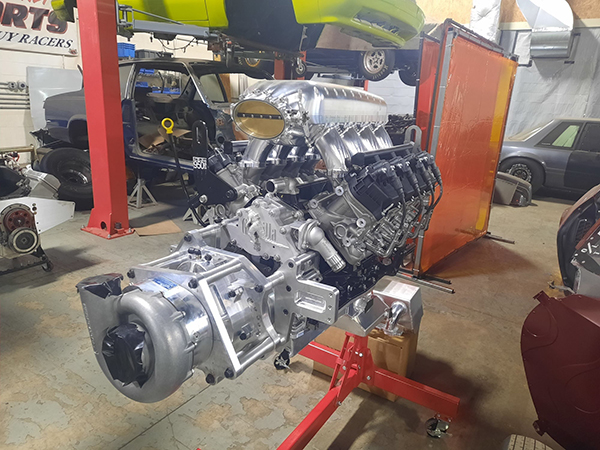
We came across WPE’s latest, and arguably most impressive, Godzilla engine build during the 2021 PRI show – a 1,500+ horsepower, ProCharged Godzilla engine. What’s super impressive about the build is it still utilizes the Ford Godzilla’s stock block, crank and cylinder head castings to achieve those high-horsepower levels.
With a 7.3L displacement and 445 cubic inches, many might jump to the conclusion that the Godzilla engine is a big block Ford. However, because bore spacing dictates what is a big block or small block configuration, the Godzilla’s 4.53˝ bore spacing makes it more a small block setup than big block. And, that’s just some of what makes Godzilla’s design and architecture magical.
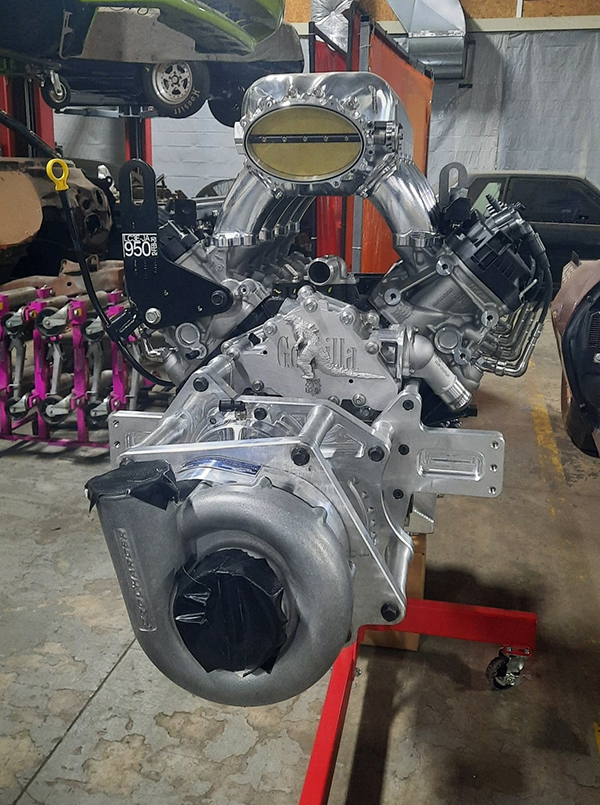
The 7.3L also has a sturdy iron block with a 6-bolt main journal configuration and a stock forged-steel crankshaft. The aluminum heads feature larger-sized valves and can flow 300 cfm stock. However, with a good port job, upwards of 400 cfm can be achieved. Other stock features include a 60mm cam bore, a chain-driven variable-volume oil pump and variable cam timing. All of this is to say 7.3L Godzilla engines are capable of big horsepower outputs both naturally aspirated and utilizing boost.
That’s exactly what Brian Wolfe was banking on when he began building up this Godzilla engine to be put in his 1993 Fox Body Mustang for the 2022 race season.
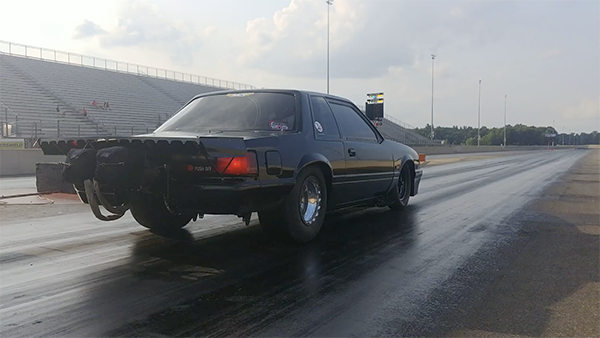
Starting with the block, which again Wolfe kept stock, except for it being hard blocked for added strength, the rest of the engine’s bottom end got help from a number of key companies. The stock crank was destroked to 3.93˝ from 3.98˝. WPE used Wiseco 13:1 compression pistons with a stock bore of 4.220˝. The rotating assembly was finished out with a set of aluminum connecting rods, King rod bearings, Mahle main bearings, and a WPE main bolt kit.
Additional components in the bottom end included a 417 Motorsports oil pan to fit into the Fox Body with a Team Z Motorsports cross member, a 60mm mechanical roller camshaft from Charlie Wescott at Militia Motorsports, and Jesel keyed lifters.
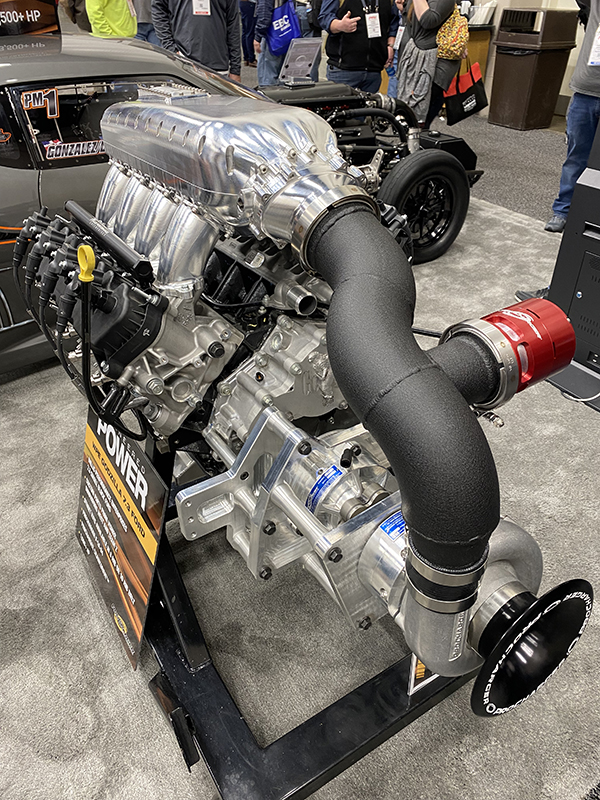
For the top end of the Godzilla build, WPE turned to Visner Engine Development to help with the cylinder heads. The stock castings got Stage 3 CNC work done to them and the chambers were also worked over. WPE added Jesel shaft-mount rocker arms with a Visner Engine Development pedestal system, 2.25˝ Manley titanium intake valves and 1.70˝ titanium exhaust valves, Trend 1/2-inch pushrods, and PAC springs.
Lastly, the engine’s induction setup features a Visner Engine Development billet intake manifold and throttle body, as well as a Team Z Motorsports custom induction tube. But, what really turns up the heat on this Godzilla 7.3L engine is the ProCharger crank drive system and the ProCharger F-1A-94 supercharger with a ProRace blowoff valve.
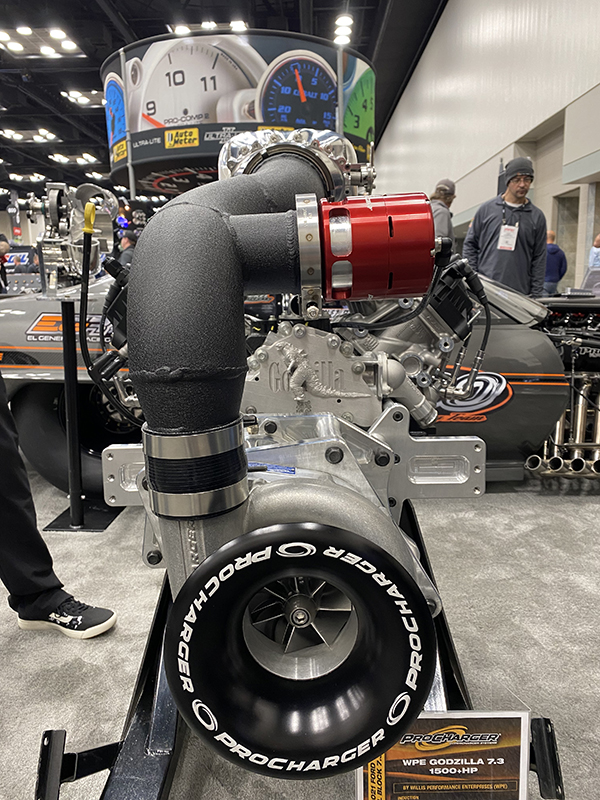
All of this equates to a Godzilla build capable of 1,500+ horsepower! According to Wolfe, he’s never been more excited for a race season to start than he is right now, and we can’t blame him one bit for that!
Engine of the Week is sponsored by PennGrade Motor Oil, Elring – Das Original, Scat Crankshafts and Engine & Performance Warehouse Inc./NPW Companies. If you have an engine you’d like to highlight in this series, please email Engine Builder Editor Greg Jones at [email protected].
